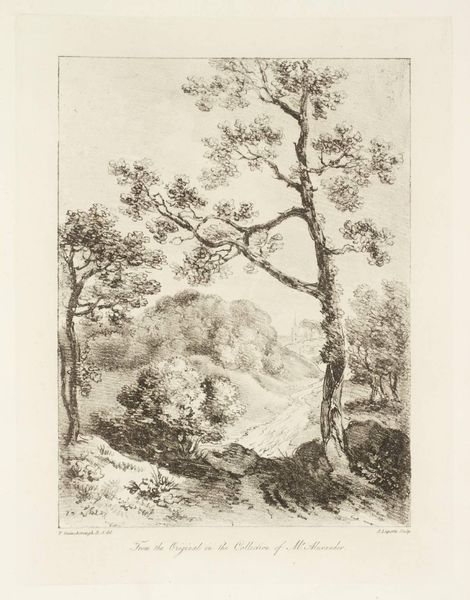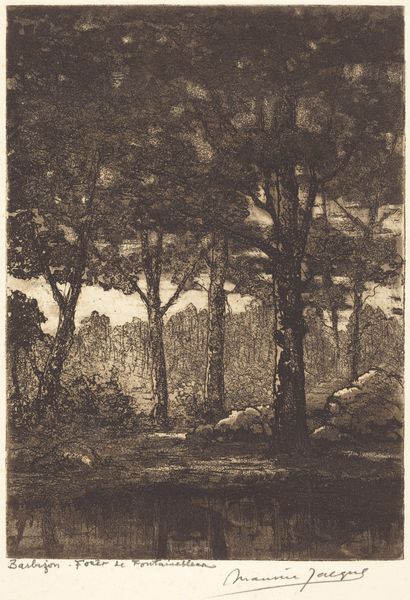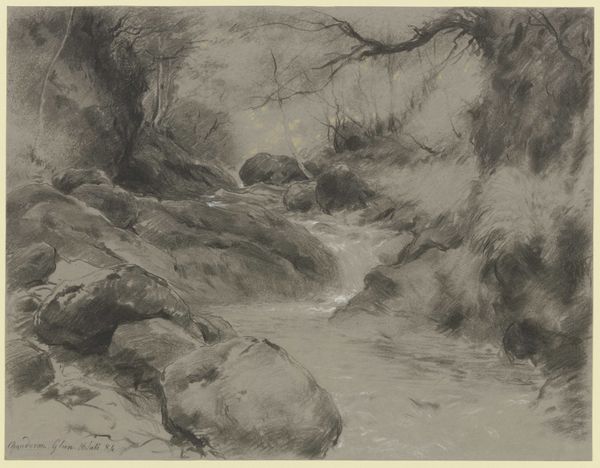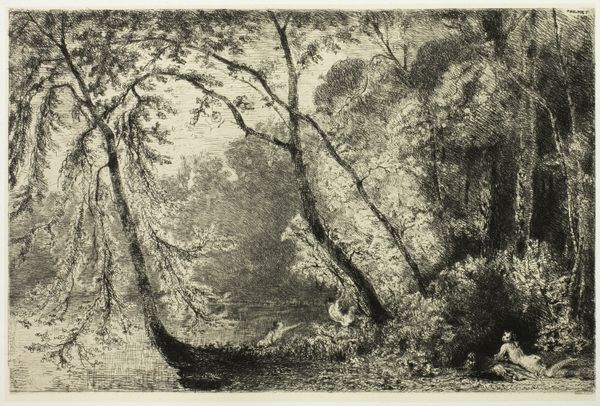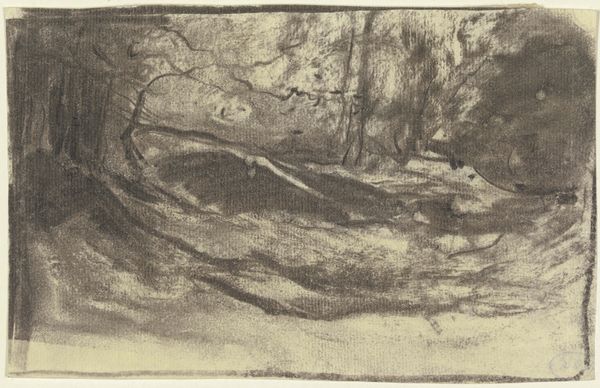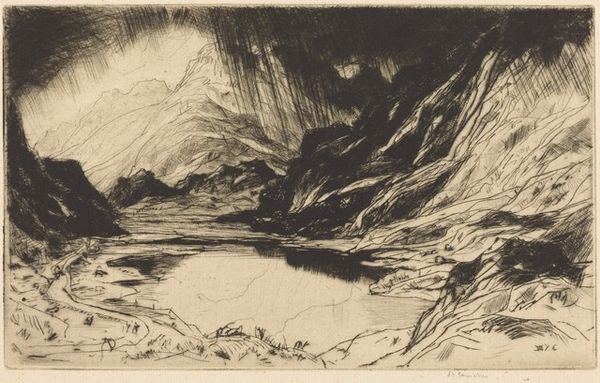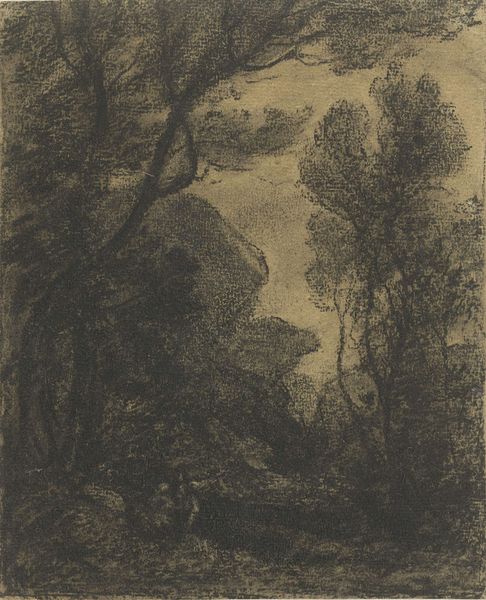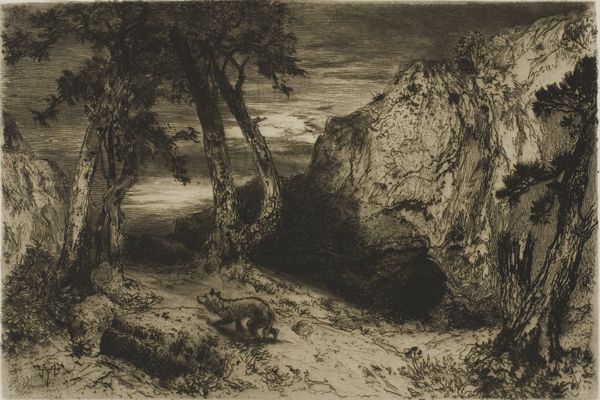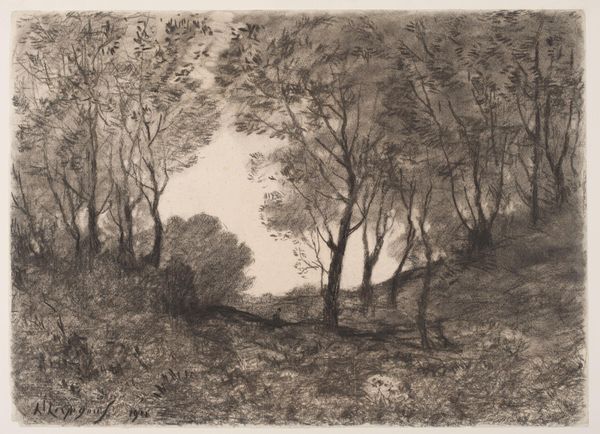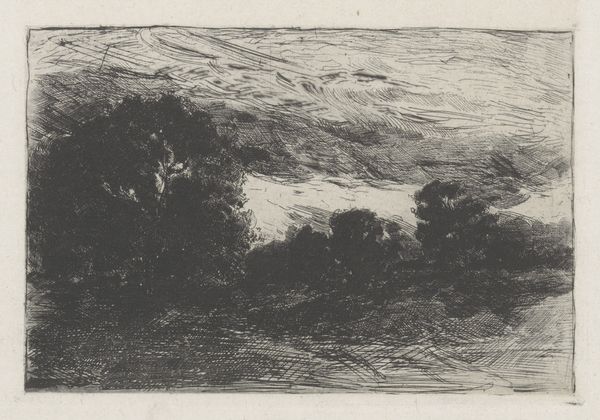
# print
#
landscape
#
realism
Dimensions: plate: 25.08 × 30.32 cm (9 7/8 × 11 15/16 in.) sheet: 34.61 × 40.64 cm (13 5/8 × 16 in.)
Copyright: National Gallery of Art: CC0 1.0
Curator: Looking at this somber etching, I'm immediately struck by the bleak yet comforting mood. There’s something both barren and reassuring about this depiction of a rural landscape. Editor: We are viewing "Sugar Maples", a print by Chauncey Foster Ryder, circa 1935. It epitomizes his dedication to realism and particularly to landscape subjects. Curator: You know, it’s fascinating how the drypoint method—using a sharp needle to scratch directly into the plate—creates such delicate, almost fuzzy lines. It really adds to that wistful feel. And the textures of the rugged rocks in contrast with the frail house evoke thoughts about human settlement within untamed landscapes. Editor: It's essential to understand Ryder's role in the art world of the early 20th century. This print, reproduced and disseminated, served to popularize an accessible vision of nature that resonated with a broad audience experiencing significant economic upheaval. The rustic cabin is hardly presented romantically—more as a necessity. Curator: Indeed. The visible plate tone enhances the contrast in texture. You can also see how his work builds upon techniques pioneered in printmaking that made art available outside gallery and museum systems, expanding cultural accessibility. Editor: Absolutely. Ryder found commercial success largely through his prints. We must remember the market context, the culture surrounding collecting at the time. This speaks volumes about taste, accessibility, and the demand for a particular kind of American scenery. Prints allowed ownership on a mass scale. Curator: Well, stepping back, one appreciates Ryder's command of light and shadow through drypoint etching—the physicality of the line itself becomes meaningful, representing human activity impacting upon the raw state. It highlights material transformation inherent in landscape prints, emphasizing process and consumption of a singular nature’s moment. Editor: Agreed. The way in which Ryder positions that small dwelling offers some context for understanding America's vision for progress against this backdrop. The house hints at the pressures of livelihood in harsh climes. That speaks directly about this nation’s hardscrabble mythology! Curator: Very well said! It really draws attention to how he bridges art's historical appeal with raw, everyday existence, reflecting socio-cultural concerns of his age through technique itself. Editor: Right, it underlines the fascinating convergence of the historical narrative with tactile engagement. Food for thought, certainly.
Comments
No comments
Be the first to comment and join the conversation on the ultimate creative platform.


